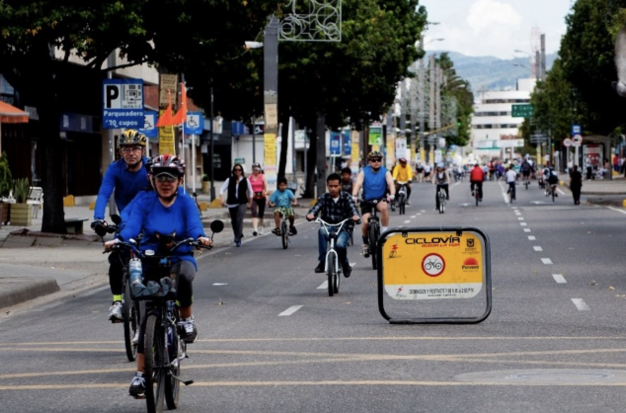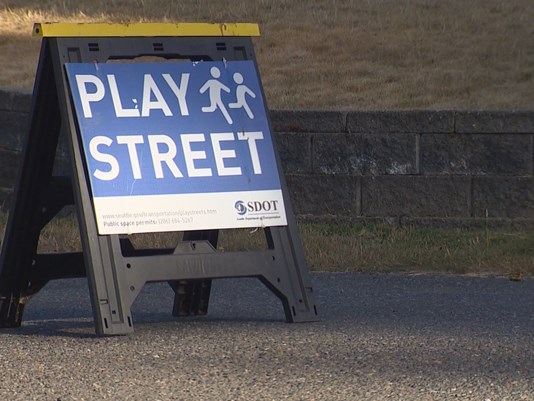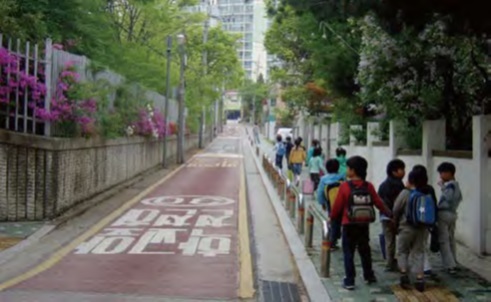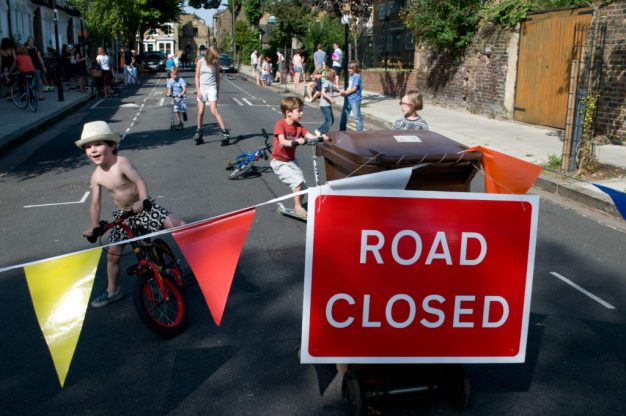
Six ways to make city streets safer for pedestrians – and children
For many city leaders, more cars and more highways mean better transportation. And during the current pandemic, fear of the spread of COVID-19 is pushing some to turn to private vehicles.
But a safe, sustainable transport future does not include further dependence on cars, as the rising global trend of pedestrian fatalities, congested and disconnected urban growth, air pollution, and climate emissions makes clear.
More than 1.35 million people die each year as a result of road traffic crashes, and more than half of all road traffic deaths are among pedestrians, cyclists and motorcyclists. Since the last World Health Organization road safety report in 2015, 300 more people are dying every day in road crashes. In India, the pedestrian fatality share has risen 84% over the last four years, with average daily fatalities going from 34 to 62 in 2018. In the United States, around 6,000 pedestrians were killed in road crashes in 2018 – a four per cent increase from 2017 and the country’s highest annual mortality rate since 1990, writes Nikita Luke, a Project Associate for Health and Road Safety at WRI Ross Center for Sustainable Cities.
As cities around the world open miles of new bike lanes and more street space to pedestrians in response to COVID-19, what began as a solution for socially distanced mobility has become a permanent vision for some cities that realize the wide-ranging benefits of streets that serve a broader range of users. But poor design and integration of “complete streets” principles can lead to conditions that are less safe and interventions that are poorly integrated with the existing city.
Here are six ways cities can create more pedestrian-friendly streets that contribute to a safer, cleaner, more productive city.
1. Provide accessible and continuous sidewalks (pavements)
Although not advisable under pandemic conditions, in high-density areas with low volumes of slow-moving vehicle traffic, opening streets to allow cars, pedestrians, cyclists and other road users to mix within the same space can actually improve road safety under normal conditions.
All road users exercise more caution
Shared streets do not have typical street elements, like vertical curbs, signs, level differences, pavement markings or colors that segregate different modes. But they often include elements that promote pedestrian priority and encourage social, economic and cultural exchange, such as street furniture, landscaping and gathering spaces. The end result of these design cues is that all road users exercise more caution, and vehicles tend to travel at much lower speeds.
Data from the Netherlands indicates that creating shared streets can reduce the incidence of crashes by up to 50%.
2. Convert underused or inactive spaces into pedestrian plazas
Pedestrian plazas can inexpensively transform under-used spaces into community assets. Unstructured, under-occupied or misused dead zones can be revamped with the help of paint, planter boxes, artwork and street furniture, along with high-resistance and low-maintenance lighting and landscaping. These transformations have an important impact on pedestrian safety. New York City has seen a 16 per cent decrease in speeding and a 26 per cent reduction in traffic crashes along streets that contain pedestrian plazas. They also support local businesses and foster neighborhood interaction.
3. Deliver safe zones for children and young adults
Children are more vulnerable to collisions than adults due to their size, limited impulse control and slower reaction time. In Hyderabad, India, 25 per cent of boys and 11 per cent of girls aged 11-14 reported a road traffic injury over the course of one year during school journeys.
Designated pick-up and drop-off zones
Areas around playgrounds, parks, schools and community centres require special attention and safe zones. Safe zones should be equipped with good conditions for walking and cycling, as well as designated pick-up and drop-off areas. Traffic signs and road markings should warn drivers that they are entering a special zone. Skid-proof pavements, high-visibility crosswalks, and wide and accessible sidewalks should make it easy for pedestrians to navigate. And traffic-calming infrastructure should be implemented to reduce vehicle speeds.

SARSAI, the winner of the 2018-2019 WRI Ross Center Prize for Cities, helped reduce traffic injuries among school children in Dar Es Salaam, Tanzania, and other African cities by 26 per cent through targeted interventions in school areas.
4. Create shared road spaces
Although not advisable under pandemic conditions, in high-density areas with low volumes of slow-moving vehicle traffic, opening streets to allow cars, pedestrians, cyclists and other road users to mix within the same space can actually improve road safety under normal conditions.
Shared streets do not have typical street elements, like vertical curbs, signs, level differences, pavement markings or colors that segregate different modes. But they often include elements that promote pedestrian priority and encourage social, economic and cultural exchange, such as street furniture, landscaping and gathering spaces. The end result of these design cues is that all road users exercise more caution, and vehicles tend to travel at much lower speeds.
Data from the Netherlands indicates that creating shared streets can reduce the incidence of crashes by up to 50 per cent.
5. Pedestrianize streets
As some cities are now doing in response to COVID-19, in areas with especially high pedestrian volume, cities should consider banning vehicle traffic entirely to allow people to move freely and safely without dodging vehicles.
Strategically located, easily accessible
Pedestrian-only streets not only improve overall safety for those on foot, but they can also boost local air quality, land value, store sales and overall health, while reducing noise levels. A 2016 study of more than 100 cities around the world that maintained multiple pedestrian-only streets found that retail sales increased 49 per cent. Cities in Austria, Germany and Scandinavian countries had more than 60 per cent increase in sales.

Pedestrian-only streets should be strategically located and easily accessible from residential and commercial spaces. They should be well-connected to the public transit systems, bicycle routes, parking and other access points.
6. Launch car-free days
Car-free days, when cities shut down a street or network of streets to vehicle traffic, encourage people to explore their city by bike or foot and help change perspectives about streets and public space. More than 2,000 cities celebrated World Car-Free Day on September 22 last year across 46 countries.
Bogotá, Colombia, holds the world’s largest car-free event, La Ciclovía, which takes place every Sunday from 7am to 2pm, covering a majority of the city. It provides more than 75 miles of car-free space to more than 1.5 million people. (Under the city’s COVID-19 travel restrictions, parts of the route have been opened during the weekday, too, to allow essential workers alternatives to public transport.)
Car-free days are opportunities to revive, liven and transform neighborhoods. Car parking spaces and vacant street corners are converted into parklets for games, leisure activities, sports and performances, while the streets are taken over by pedestrians and cyclists of all ages.

Regular car-free days can increase physical activity, decrease pollution levels, aid social inclusion and community building, provide opportunities for economic revitalization, and promote biking and walking in a safer environment. When Paris held its first car-free day in 2015, there was a 40 per cent reduction in exhaust emissions and a 50 per cent reduction in sound levels in the city centre.
People know how to use a good street when they see it
Imagine a city designed to accommodate pedestrians first. It’s more connected, active, safer and healthier. As cities respond to the effects of COVID-19, efforts to rethink road space should place these pedestrian-focused principles among their highest priorities. People know how to use a good street when they see it, and it is the responsibility of urban planners to create them.
This article was first published at TheCityFix and the author was Nikita Luke, a Project Associate for Health and Road Safety at WRI Ross Center for Sustainable Cities.




